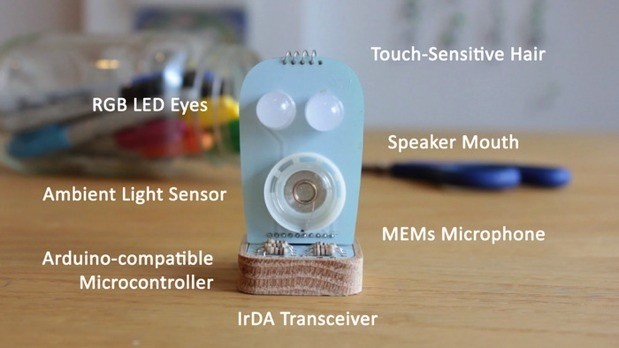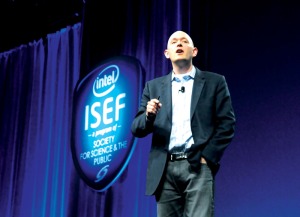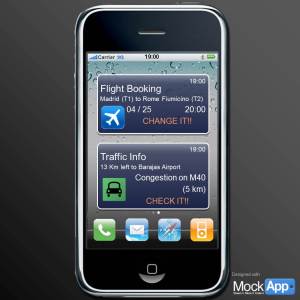Category: Gadgets
Challenges and Risks of Pervasive Computing
Interesting introductory article in a IEEE Computing Now special issue on Privacy Challenges for Pervasive Computing: ARTICLE
This is something we should account for when designing such systems.
Conferences on Pervasive Displays and Advanced Visual Interfaces
Just came back from presenting two papers in two very interesting conferences:
The 3rd International Symposium on Pervasive Display 2014 in Copenhagen and the International Working Conference on Advanced Visual Displays 2014 in Como.
In both conferences Post-WIMP interfaces were rocking.
My papers were:
1-“What’s in it for me: Exploring the Real-World Value Proposition of Pervasive Displays”
Simo Hosio, Jorge Goncalves, Hannu Kukka, Alan Chamberlain and Alessio Malizia
2-“Visual Engagement: Designing Projected Touch-surfaces for Community Use in a Rural Context”
Alan Chamberlain (University of Nottingham, United Kingdom); Alessio Malizia (Brunel University, United Kingdom); Alan Dix (University of Birmingham, United Kingdom)
Stay tuned for more info and feel free to contact me if interested in a copy of the papers or infos on such events.
Tech Revolutions? They shouldn’t be a surprise
Have you ever tried to design while blindfolded or use your apps with the sound off? You might gain crucial insights
Vinton G. Cerf, Vice President and Chief Internet Evangelist at Google Inc. and the president of ACM, calls especially UI (User Interface) and UX (User Experience) designers to strive fro accessibility. In fact, we are an aging society that needs assistive response not to mention new groups of people needing accessible apps, i.e. wounded soldiers coming back home. Given the range and potential of new technologies, e.g. Google glass, designers need to carefully address this challenge [ARTICLE]
Via acm.org
Prototyping Device Ecologies: Physical to Digital and Viceversa
Our Studio proposal has been accepted at TEI 2014 – 8th International Conference on Tangible, Embedded and Embodied Interaction.
This Studio will involve participants creating interactions with physical and digital elements. They will have the opportunity to use a toolkit we developed that combines physical and digital widgets into a unique environment to allow the rapid setup of device ecologies. Therefore, participants will be able to explore how the toolkit support to physical/digital interaction gives people with low, when no, technical skills the possibility to rapidly prototype interactions among heterogeneous devices, thus blurring the boundaries between the physical and the digital world.
See here a couple of example of what participants will be able to do:
Meet a Little Robot that can teach you the basics of hardware programming
Tired of hardware programming lessons and tutorials or dealing with Arduino boards? Well on Kickstarter there’s a new project on a tiny interactive robot, The Little Robot Friend, who can help you learning and teaching the basics of hardware programming and seems actually fun [ARTICLE]
Via Engadget.com
Interested in Futurism and Science Fiction? You might want to take a look at the Intel’s Tomorrow Project
With Mark Weiser‘s vision already becoming true, there’s currently another vision which might be the next step toward computing paradigms: The Tomorrow Project by Intel.
Take a look at this interview with Brian David Johnson, futurist at Intel: http://bcove.me/vwfae2ra
Via ASU Magazine
It’s time to design the next Calendar App: Design lessons on building Mynd
Mynd is a competeley new kind of Calendar App developed by Alminder, a seed-funded team who had previously worked together at Motorola. In this article, they shared a few of the design lessons that were learned while creating a Windows Phone-style interface for Apple’s iPhone [ARTICLE].
I must admit that with some of my co-authors we developed a prototype few years ago which somehow resembled the app (see photo below): Teresa Onorati, Alessio Malizia, Kai A. Olsen, Paloma Diaz, and Ignacio Aedo. 2012. I feel lucky: an automated personal assistant for smartphones. In Proceedings of the International Working Conference on Advanced Visual Interfaces (AVI ’12), Genny Tortora, Stefano Levialdi, and Maurizio Tucci (Eds.). ACM, New York, NY, USA, 328-331 [ARTICLE].
Via Alessio Malizia
Prepare to turn your iPad in a 3D sensor – One of the coolest project on Kickstarter right now
What if you can just walk around a room an grab data on all the furniture to generate a 3D model? And what if you could be able to play 3D augmented reality games on your iPad? The dream is coming true with this science-fiction like device called Structure Sensor [ARTICLE]
Via Kickstarter
Tired of your smartphone? What about an anticipatory phone
In the last few years we have all been living in (strict) contact with our smartphones but there is a new player claiming to bring us a step ahead. The Moto X, the first born from the union between Motorola and Google, will take advantage of sensors and cloud-based services to provide us with a new experience: anticipate our desires and fulfill them when possible without even needing to take it off from our pockets [ARTICLE]. Interestingly, it seems that me and Kai Olsen predicted these gadgets almost 3 years ago: Kai A. Olsen, Alessio Malizia, “Automated Personal Assistants,” Computer, vol. 44, no. 11, pp. 112, 110-111, November, 2011
Via Wired





